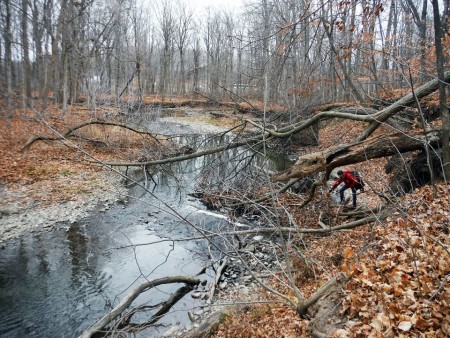
You’ve probably never heard of a redside dace before and you might never see one if it becomes extinct. That’s because the habitat of this endangered species, a member of the minnow family, is being degraded by agricultural and urban development in southern Ontario.
March 22 is World Water Day, an international observance and an opportunity to learn more about water related issues, be inspired to tell others and take action to make a difference.
Geography professor Jaclyn Cockburn and her students are working with U of G grad Paul Villard, adjunct professor and director of GEO Morphix, an environmental consulting company, to find out what makes a healthy habitat for the redside dace and how to integrate these features in stream restoration projects in the Greater Toronto Area.
“If we’re doing all this stream restoration for this specific species, are we being successful in terms of seeing that species coming back?” says Cockburn.
Redside dace have different habitat requirements, depending on the season. In winter, they need slow-moving water that provides shelter from predators. When the fish spawn in the spring, they need fast-moving shallow water to lay their eggs in the nests of creek chub, another minnow species, which offer protection. In summer, redside dace need cool water that’s shaded from the sun by vegetation or overhanging banks. Plants also help prevent erosion.
As visual hunters, the fish also need clear water to see their prey, such as insects, which they catch by jumping out of the water. If the stream is connected to a stormwater management system, it might experience increased turbidity (cloudiness) during heavy rainfall as the runoff carries sediment into the stream. “If there’s too much turbidity, that reduces their ability to hunt, which would then impact their overall health,” says Cockburn. Sediment can also settle on the stream bed, making it shallower.
The researchers are conducting field studies where they measure the depth, slope, speed and temperature of streams along with recording videos of fish populations that live there. A flow modelling program determines the best design elements for the stream restoration, such as the number of bends and the right mix of gravel and small rocks for the stream bed.
Stream restoration might involve “undoing some of the damage that was done during agricultural land use,” she says. “Sometimes restoration is focused on mitigating or counteracting the damage associated with present urban development.”
Some stream restoration projects are more challenging than others. Highland Creek in Toronto, for example, runs through a well-established neighbourhood with properties butting against the creek. “The types of stream restoration we can do there are somewhat limited,” says Cockburn. “What can you do in that space that’s going to be best for that stream and also best for the neighbouring land uses around that?” Undeveloped land offers more opportunities to rehabilitate streams before residential and commercial construction begins.
Ideally, streams should be rehabilitated from start to finish, not in sections, she adds, because problems that aren’t addressed upstream can create a chain reaction of effects downstream. “Those one-off fixes don’t necessarily fix anything and they can sometimes lead to more problems.”